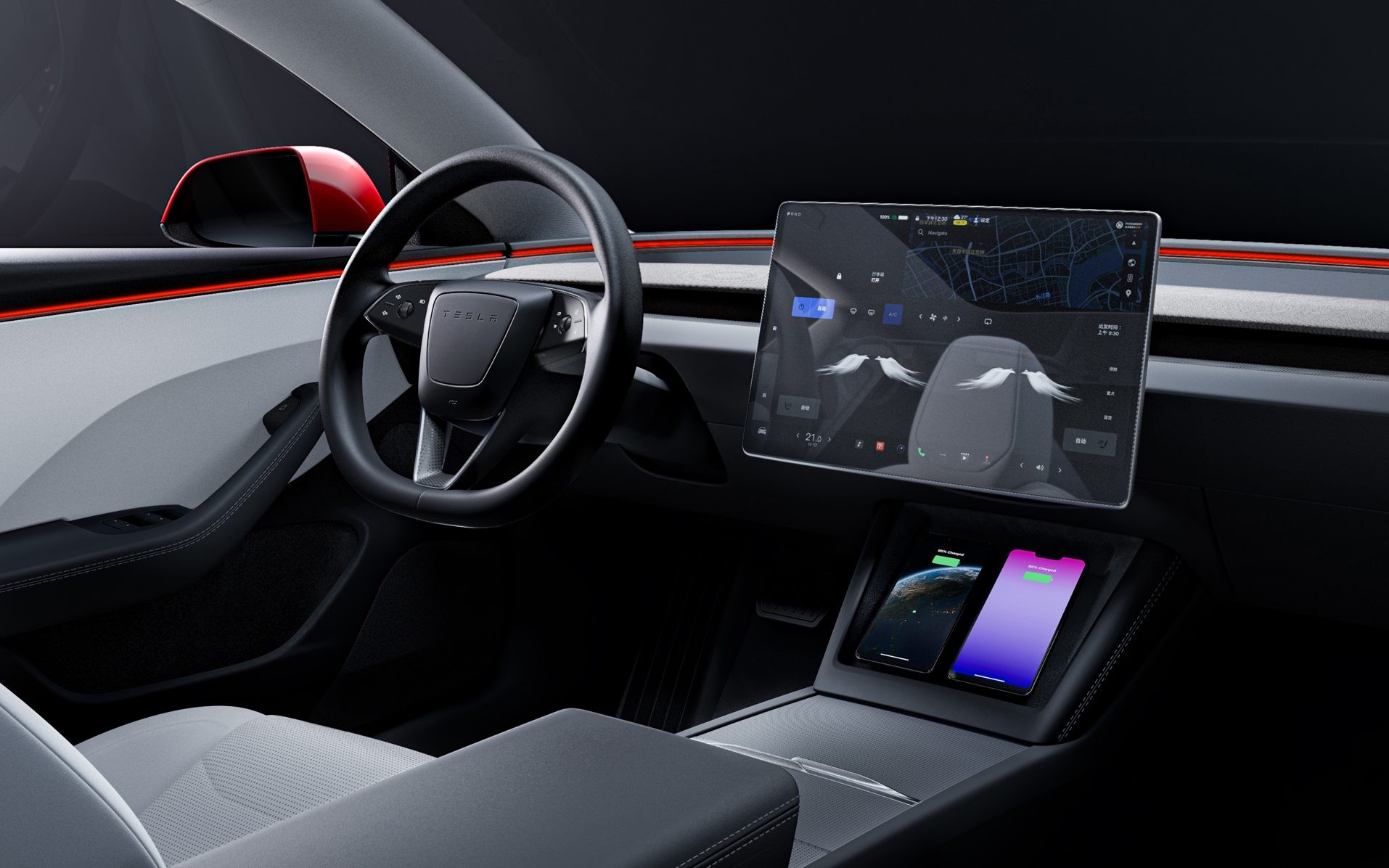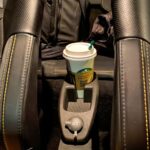The Tesla Model 3 has long been a benchmark in the electric vehicle (EV) market, a disruptor that forced traditional automakers to rethink their strategies. Now, with the updated Model 3, Tesla aims to solidify its position. This comprehensive Model 3 Review delves into whether this refresh truly elevates the EV standard, addressing concerns and highlighting improvements for potential buyers in the English-speaking market.
The original Model 3 turned heads with its minimalist interior, ditching the conventional instrument cluster in favor of a central touchscreen. This bold move cemented Tesla’s image as a tech-first car company. The latest iteration takes this “not like other carmakers” ethos even further by removing indicator stalks altogether. Turn signals are now controlled by buttons on the steering wheel – a feature borrowed from Ferrari, but not without its drawbacks. While innovative, this system can be cumbersome, especially when navigating roundabouts and needing to indicate lane changes mid-turn. This design choice might contribute to the stereotypical image of Tesla drivers and their sometimes-questionable signaling habits.
Similarly, wiper controls are also integrated into the steering wheel and touchscreen interface. A single button press initiates a wipe, a long press activates screenwash, and further adjustments require navigating menus on the central screen. While manual adjustment proves more effective than the sometimes-erratic automatic wipers, the process raises questions about the practicality of burying essential functions within touchscreen menus. Adjusting mirrors also requires touchscreen interaction, further contributing to the debate around over-reliance on digital interfaces.
Despite these unconventional control layouts, the absence of a traditional instrument binnacle is surprisingly easy to adapt to. Speed and essential information can be readily noted from the central screen. However, the omission of a head-up display, even as an option in a vehicle positioned as premium, remains puzzling and a missed opportunity to enhance driver convenience and safety.
Connectivity is a mixed bag. While Bluetooth phone pairing is seamless and native apps for popular music streaming services like Spotify and Apple Music are included, Apple CarPlay and Android Auto are notably absent. Tesla pushes users towards its in-built media and navigation ecosystem, with workarounds available but not ideal. Another minor yet arguably unrefined detail is the horn sounding upon locking and unlocking – a feature that feels out of place in a vehicle aiming for a premium feel. Conversely, the inclusion of whimsical features like the “Emissions” app, which plays various fart noises and can even link them to turn signals, adds a playful, albeit divisive, touch to the Tesla experience, particularly amusing to younger passengers.
Tesla’s “Autopilot” driver assistance system, even in its basic form, proves to be a point of frustration. While capable of lane keeping and maintaining distance, it falls short in practical driving scenarios. Overtaking maneuvers, for example, often trigger Autopilot cancellation as it struggles to recognize intended lane changes, leading to drivers often opting to disengage the system entirely.
However, moving beyond these quirks and criticisms, the updated Model 3 demonstrates significant improvements and strengths. The exterior styling is a notable step forward. The front fascia has been refined, shedding the somewhat awkward “stubby beetle” look of the previous model. Sharper lines, slimmer headlights, and redesigned rear lights integrated into the boot lid create a more cohesive and attractive aesthetic.
Practicality is also enhanced with a redesigned hatch that prevents rainwater from entering the boot – a seemingly basic but previously overlooked design flaw, highlighting Tesla’s relative youth as a car manufacturer. While the wheel sizes might appear visually smaller within the arches, this design choice likely contributes to improved ride comfort. Aerodynamic refinements result in a class-leading drag coefficient of 0.219Cd, boosting efficiency and range.
Performance options remain compelling, ranging from “quick” to “very quick.” The rear-wheel-drive Model 3 achieves 0-60mph in 5.8 seconds, while the dual-motor Long Range variant slashes that to a Porsche 911-rivalling 4.2 seconds. A future Performance version is anticipated, potentially pushing acceleration times below the 4-second mark.
Beyond outright speed, the Model 3 excels in ride quality and handling. The suspension strikes an impressive balance between comfort and control, absorbing road imperfections while maintaining composure in corners. Steering is well-weighted, contributing to a genuinely sporty and engaging driving experience that remains accessible and unintimidating in its base configuration. Road noise is noticeably reduced compared to the previous model, particularly at motorway speeds, although wet weather wheel arch noise is still present.
Tesla’s Supercharger network, boasting over 12,000 locations across Europe, remains a significant advantage. Model 3 owners can gain up to 172 miles of range in just 15 minutes of charging, with potential for even faster charging speeds in the future. Official range figures are impressive: 318 miles for the entry-level rear-wheel-drive model and a remarkable 390 miles for the Long Range all-wheel-drive version tested, although the latter comes with a significant price premium. Real-world range accuracy is commendable, with the car’s data menus providing helpful and reliable range predictions, reflecting excellent energy efficiency, often exceeding 5 miles per kWh.
However, the competitive landscape is intensifying. Rivals like the Polestar 4 offer similar range and performance at comparable prices. Emerging Chinese manufacturers, such as BYD with its Seal model, present compelling alternatives, often undercutting Tesla on price. Tesla’s pricing strategy, known for sudden and unannounced price adjustments to maintain market share against growing competition, poses a risk for buyers concerned about depreciation and resale value. This aggressive pricing, particularly from Chinese brands heavily subsidized in their domestic market, could trigger a price war, potentially impacting Western automakers’ long-term profitability.
Despite infotainment quirks and playful features, the system is generally responsive and intuitive. The inclusion of in-car games, including a steering wheel-controlled buggy racer and creative apps like a sketchpad and music creation studio, adds entertainment value, particularly for families.
Rear passengers benefit from a new rear screen for entertainment and climate control, offering access to streaming services and Bluetooth headphone connectivity for a more peaceful cabin environment. Tesla’s mobile app is notably responsive and user-friendly, and the minimalist cabin features a customizable LED strip and interchangeable trim panels. Practical touches like the angled phone holder with wireless charging and ample USB-C ports throughout the cabin enhance usability. Comfortable seats, a good driving position (albeit slightly high), a spacious boot with additional storage, and heated rear seats further contribute to the Model 3’s appeal. The main drawback for rear passengers is the low seat base, potentially causing discomfort for taller occupants.
Pros:
- Strikingly improved exterior design
- Impressive performance and handling
- Excellent range and efficient charging
- Extensive Supercharger network
- User-friendly infotainment system with entertainment features
- Comfortable and spacious cabin
Cons:
- Unconventional and sometimes cumbersome control layouts (indicators, wipers)
- Lack of Apple CarPlay and Android Auto
- Basic Autopilot system can be frustrating
- Potential for rapid depreciation due to price fluctuations
- Rear seat comfort could be improved for taller passengers
Conclusion:
The updated Tesla Model 3 is undeniably a better car than its predecessor, refining the design, enhancing performance, and improving practicality. It remains a compelling choice for EV buyers, particularly those prioritizing technology, performance, and access to a robust charging infrastructure. However, some unconventional design choices and increasing competition mean it’s no longer the undisputed king of the EV segment. While Tesla enthusiasts will find the Model 3 refresh appealing, those considering alternatives might find compelling options in rivals like the BMW i4, Polestar 2, or Kia EV6, depending on their specific priorities. The Model 3 review ultimately reveals a significantly improved vehicle that maintains Tesla’s innovative spirit while facing a more challenging and diverse EV market.

